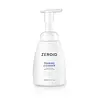What's inside
What's inside
 Key Ingredients
Key Ingredients

 Benefits
Benefits

 Concerns
Concerns

 Ingredients Side-by-side
Ingredients Side-by-side

Water
Skin ConditioningDisodium Lauryl Sulfosuccinate
CleansingSodium Lauroyl Methyl Isethionate
CleansingDisodium Cocoamphodiacetate
CleansingCoco-Glucoside
Cleansing1,2-Hexanediol
Skin ConditioningBetaine
HumectantSodium Chloride
MaskingHydroxyethyl Urea
HumectantCitric Acid
BufferingHydroxyacetophenone
AntioxidantDisodium EDTA
Hexylene Glycol
EmulsifyingSodium PCA
HumectantSodium Hyaluronate
HumectantMyristoyl/Palmitoyl Oxostearamide/Arachamide Mea
Skin ConditioningWater, Disodium Lauryl Sulfosuccinate, Sodium Lauroyl Methyl Isethionate, Disodium Cocoamphodiacetate, Coco-Glucoside, 1,2-Hexanediol, Betaine, Sodium Chloride, Hydroxyethyl Urea, Citric Acid, Hydroxyacetophenone, Disodium EDTA, Hexylene Glycol, Sodium PCA, Sodium Hyaluronate, Myristoyl/Palmitoyl Oxostearamide/Arachamide Mea
Water
Skin ConditioningPanax Ginseng Root Extract
EmollientActinidia Arguta Fruit Extract
Skin ConditioningDisodium Laureth Sulfosuccinate
CleansingCoco-Betaine
CleansingSodium Cocoyl Apple Amino Acids
Skin ConditioningMalus Domestica Fruit Extract
AntioxidantCitrus Limon Fruit Extract
MaskingCitrus Aurantium Dulcis Fruit Extract
MaskingGlycerin
HumectantLaminaria Japonica Extract
Skin ProtectingLavandula Angustifolia Extract
Skin ConditioningCamellia Sinensis Leaf Extract
AntimicrobialCentella Asiatica Extract
CleansingMelaleuca Alternifolia Leaf Extract
PerfumingBetaine
HumectantButylene Glycol
HumectantCitric Acid
BufferingLactic Acid
Buffering1,2-Hexanediol
Skin ConditioningCeramide NP
Skin ConditioningWater, Panax Ginseng Root Extract, Actinidia Arguta Fruit Extract, Disodium Laureth Sulfosuccinate, Coco-Betaine, Sodium Cocoyl Apple Amino Acids, Malus Domestica Fruit Extract, Citrus Limon Fruit Extract, Citrus Aurantium Dulcis Fruit Extract, Glycerin, Laminaria Japonica Extract, Lavandula Angustifolia Extract, Camellia Sinensis Leaf Extract, Centella Asiatica Extract, Melaleuca Alternifolia Leaf Extract, Betaine, Butylene Glycol, Citric Acid, Lactic Acid, 1,2-Hexanediol, Ceramide NP
Ingredients Explained
These ingredients are found in both products.
Ingredients higher up in an ingredient list are typically present in a larger amount.
1,2-Hexanediol is a synthetic liquid and another multi-functional powerhouse.
It is a:
- Humectant, drawing moisture into the skin
- Emollient, helping to soften skin
- Solvent, dispersing and stabilizing formulas
- Preservative booster, enhancing the antimicrobial activity of other preservatives
Betaine is a common humectant (a substance that promotes retention of moisture). It's known to be gentle on the skin and can help balance hydration.
This ingredient is best for improving hydration and soothing irritated skin. Studies also show it helps even out skin tone.
Fun fact: Betaine is naturally created in the skin and body. The kind found within cosmetic products can be either plant-derived or synthetic.
Another name for betaine is trimethylglycine.
Learn more about BetaineCitric Acid is an alpha hydroxy acid (AHA) naturally found in citrus fruits like oranges, lemons, and limes.
Like other AHAs, citric acid can exfoliate skin by breaking down the bonds that hold dead skin cells together. This helps reveal smoother and brighter skin underneath.
However, this exfoliating effect only happens at high concentrations (20%) which can be hard to find in cosmetic products.
Due to this, citric acid is usually included in small amounts as a pH adjuster. This helps keep products slightly more acidic and compatible with skin's natural pH.
In skincare formulas, citric acid can:
While it can provide some skin benefits, research shows lactic acid and glycolic acid are generally more effective and less irritating exfoliants.
Most citric acid used in skincare today is made by fermenting sugars (usually from molasses). This synthetic version is identical to the natural citrus form but easier to stabilize and use in formulations.
Read more about some other popular AHA's here:
Learn more about Citric AcidWater. It's the most common cosmetic ingredient of all. You'll usually see it at the top of ingredient lists, meaning that it makes up the largest part of the product.
So why is it so popular? Water most often acts as a solvent - this means that it helps dissolve other ingredients into the formulation.
You'll also recognize water as that liquid we all need to stay alive. If you see this, drink a glass of water. Stay hydrated!
Learn more about Water